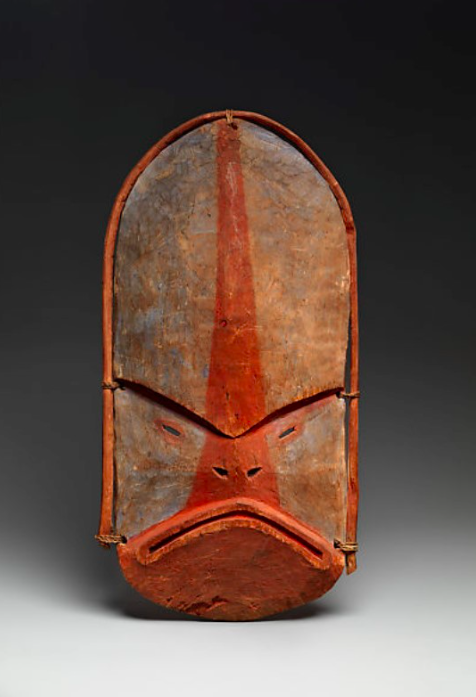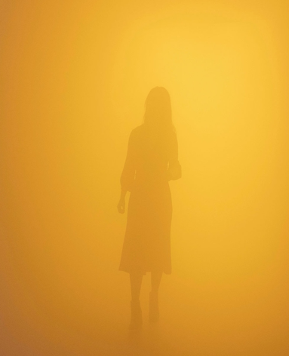Mona Hatoum’s Home: A Fear Of The Everyday
By Monica Wang. Bachelor of Fine Arts, Critical Studies 204. Grade: A+ 90%.
When the ‘everyday’ is unfamiliar to you, when in fact a sense of displacement arises from your surroundings, the ‘everyday’ starts to speak less about the banal and more about alienation. Curators David A. Ross and Nicholas Serota have hypothesised that to look at the everyday is to “recognize that in fact it’s a reflection of a mind awake and a mind asleep”.[1] Mona Hatoum’s Installation Home (1999) reveals a dangerous side to a familiar space, simultaneously shocking the viewer’s awakened mind and conjuring up things once asleep. Does this reaction from the viewer arise from Home’s threatening disruption of the quotidian, or from the artist’s personal experiences which emerge through the work? This will be examined in relation to texts found in the Whitechapel Volume ‘The Everyday’, along with how the theme of the everyday has developed over time and may affect readings of Hatoum’s work.
In Home the viewer experiences an everyday space pulled apart and altered to reveal Hatoum’s horrors. She has turned the kitchen from a room of nurture into a death-trap. Upon a table, wires are haphazardly connected to a variety of metal kitchen utensils. Live electricity runs through the wires, causing the installation to crackle and hiss. Lightbulbs are placed within cheese graters and sieves, so when touched by electrical current, ominous flickers of light are cast across the table. As a viewer, all our instincts turn to fear – visceral fear which is enhanced by our social conditioning that associates the kitchen with safety. In a proposal written by radical collective Lettrist International in 1955, it was stated that the everyday was something to be examined, challenged, and destroyed if necessary. In a desire to solve the “various urbanistic problems”[2] of Paris, they proposed a complete upheaval of the familiar cityscape which they believed to be damaging to human advancement.[3] In this sense Home abides by the same mentality, that everyday spaces should be looked at critically, and that they do not hold the same meanings for everyone. However, Hatoum’s work, which is contemporary, may subscribe to aspects of Lettrist International’s beliefs, but also exists in its own universe – irrelevant of politics or history. That is not to say it transcends the everyday, it simply represents the everyday psychology of the artist.
Although the Lettrist International proposal was written in the 1950s, critic Sally Banes’ text discussing the 1960s ‘everyday’ shared similar chains of thought; namely, that due to the political tenor at the time, the ordinary stood for “populist aims of accessibility and equality”.[4] This is further emphasized in John Cage’s statement that: “Therefore, every object ….is a Duchamp”.[5] All familiar things are intrinsically important to everyday life; they are art pieces in themselves, regardless of whether they are exhibited in a gallery or not. In Hatoum’s work, she has used existing objects to convey her physiological disturbance, an effect that could not have been as effectively achieved in a painting or photograph. The viewer needs to be physically present to see these very familiar objects turned into a scene of grave danger. The installation is only visible through a fence of wire to distance to viewer from the circuit, but this barricade feels temporal. If we take Duchamp into account, would the kitchen utensils have felt as unsettling laid out in the gallery as if taken exactly from the kitchen? Certainly, there would be a degree of uncanny, but terror would not be invoked in the viewer. In Home the theme of the everyday is elevated to that of high art due to its placement in a gallery, but it strives not to become an icon but rather a beacon of fear.
A universal experience of the unsettling domestic scene of Home is unachievable. Hatoum’s installation stems from her own personal experience of displacement. As a silent undercurrent, the theme of diaspora is weighty in Home. Mona Hatoum had to remain in Britain in 1975 because civil war broke out in her home country of Lebanon. She felt a sense of exile, firstly from not being about to enter Lebanon, but also from childhood memories of her Palestinian family fleeing to Lebanon from Haifa due to the war with Israel.[6] The title ‘Home’ itself speaks of its futility – this is not a home, no one could live here without being electrocuted! The minimalism of her work also reveals her discomfort in the Western world. Minimalism, an art movement that emerged strongly in post-war Western countries, especially America, is utilized to emphasize the remoteness of her installation, but also to reveal the elitist, unwelcoming social structures that Hatoum may have experienced. Contemporary artist Joseph Kosuth in his text ‘The Artist as Anthropologist’[7] brings in matters of culture into his discussion about the everyday. He argues that there is a gap between something’s “historicity” and how it is experienced in real life. We see this in Home, as the kitchen is, in cultural memory, a place of nurture, but for Hatoum she experiences and represents it as a threatening place. Kosuth’s article, written in 1975, differs from the two texts discussed above as the everyday is discussed from a wider lens, incorporating cultures outside of Western experience.
To tap into our empathy, Hatoum has incorporated humanizing elements into Home. If you ignore the electrical threat of the installation, there is a degree of beauty about the work – the lightbulb within the upturned colander shines light out of its many holes, streaming patterned light across the table, like an ornamental lamp (Fig.2.). The metal items and electrical wire connect to complete a circuit, but this in itself creates interesting lines and shapes. There is a sensitivity to this work, a beauty behind its danger, and Hatoum has carefully designed the placement of the objects to not only pass electricity through them, but to also convey a bare elegance. There are no distractions, no excess ornamentation, and this formal beauty adds another layer onto the work. This work is not merely frightening, it is poetic, and Hatoum, through her fear and alienation, humanizes the installation so we can appreciate Home even through our reactions of shock. Public Cultures Professor Nikos Papastergiadis extends Kosuth’s argument that culture plays a part in the contemporary everyday: “the identity of the social whole can no longer be represented according to the neat and discrete boundaries of the national.”[8] An emphasis on personal experience arises, and Papastergiadis even touches on estrangement, that “even those who have not moved increasingly feel estranged from their own sense of place.”[9] Hatoum’s work not only plays to our empathy and makes the viewer realize that for many displaced people the idea of home is a heavy-handed subject, but it also relates to people who have experienced diaspora.
Mona Hatoum’s Home disrupts an everyday scene and uses emotive personal narrative to implore the viewer to pay attention to injustice and exclusion.[10] Home is not just her story, it is representative in different degrees of people experiencing diaspora and alienation all over the world. In the texts discussed, the theme of the everyday has changed over time, from critiquing existing physical and social structures, to considering how culture and diaspora contributes to different readings of the everyday. All in all, the everyday is subjective, and Home, in relation to the readings from Whitechapel, further emphasizes that the ordinary is not just a blanket banality- for some, like Hatoum, it can be terrifying, dangerous, and unsettling.
[1] Ross, David A., and Nicholas Serota. “The Everyday: A Conversation//2000,” 76.
[2] Lettrist International. “Proposals for Rationally improving the City of Paris//1955,” 92.
[3] Ibid., 93.
[4] Banes, Sally. “Equality Celebrates the Ordinary//1993,”116.
[5] In John Cage’s 26 Statements re Duchamp, (1969) (quoted in Banes 2008).
[6] Brett, Mona Hatoum, 17.
[7] Kosuth, Joseph. “The Artist as Anthropologist//1975,” 182.
[8] Papastergiadis, Nikos. “ ‘Everything That Surrounds’: Art, Politics and theories of the Everyday//1998,”,72.
[9] Ibid.
[10] Goetz, Schumacher, and Michelberger. Mona Hatoum. 57.
Bibliography:
Brett, Guy. Mona Hatoum. London: Phaidon, 1997.
Banes, Sally. “Equality Celebrates the Ordinary//1993.” In The Everyday, 113-119. London: Whitechapel Gallery and MIT Press, 2008.
Cage, John. “26 Statements re Duchamp”. In a Year from Monday, 70;72. Connecticut: Wesleyan University Press, 1969.
Goetz, Ingvild, Rainald Schumacher, and Larissa Michelberger. Mona Hatoum. Germany: Hatje Cantz, 2012.
Hatoum, Mona. Home. 1999. Wooden Table, 15 Steel kitchen utensils, electric wire, 3 light bulbs, software and audio, 6000 x 3500 mm. Tate Gallery, London. Acquired in 2002.
Johnstone, Stephen. The Everyday. London: Whitechapel Gallery and MIT Press, 2008.
Kosuth, Joseph. “The Artist as Anthropologist//1975.” In The Everyday, 182-184. London: Whitechapel Gallery and MIT Press, 2008.
Lettrist International. “Proposals for Rationally Improving the City of Paris//1955.” In The Everyday, 92-94. London: Whitechapel Gallery and MIT Press, 2008.
Papastergiadis, Nikos. “ ‘Everything That Surrounds’: Art, Politics and theories of the Everyday//1998.” In The Everyday, 68-75. London: Whitechapel Gallery and MIT Press, 2008.
Ross, David A., and Nicholas Serota. “The Everyday: A Conversation//2000.”In The Everyday, 76-77. London: Whitechapel Gallery and MIT Press, 2008.
About the Author:
Monica is a third year BA/BFA student majoring in Art History. She is interested in the intersection of craft and fine art. Monica is also Vice-President of the Art History Society.











